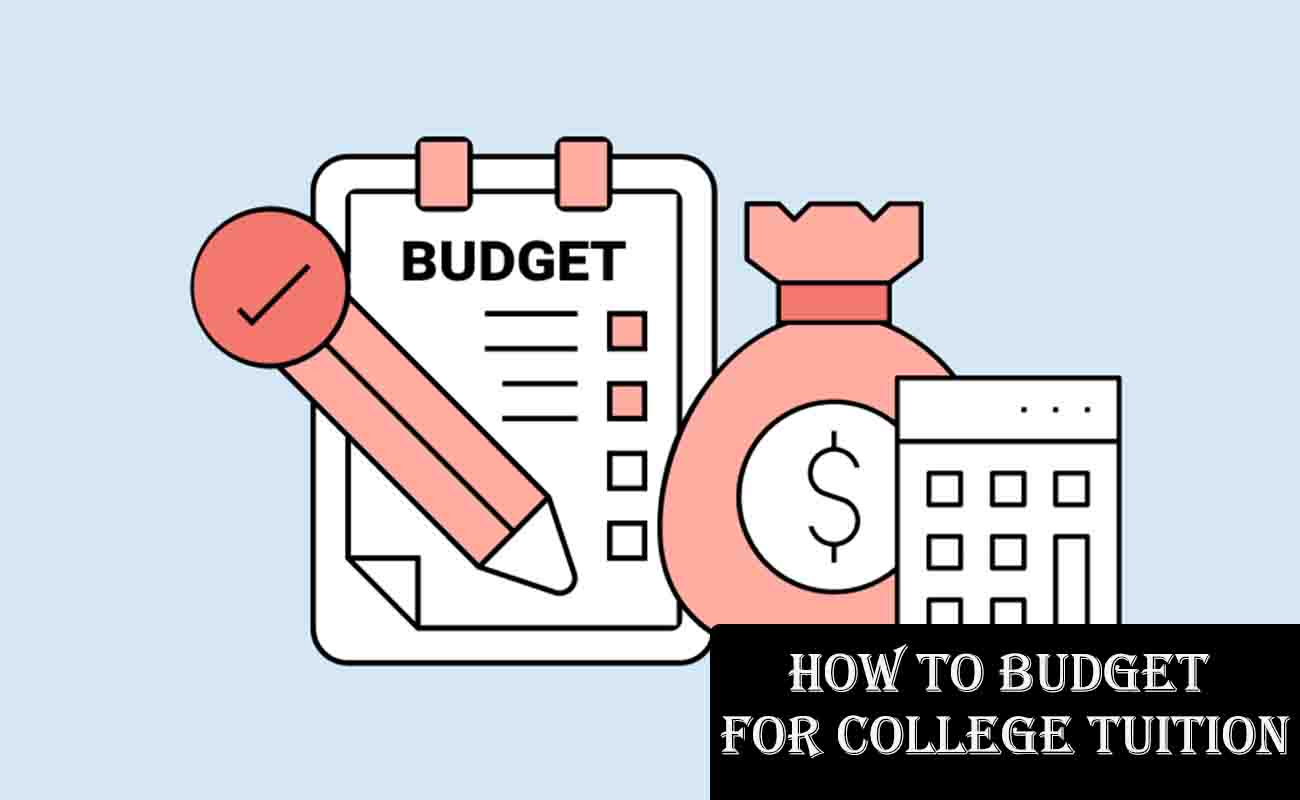In this post, I will share some tips on how to budget for College Tuition. Budgeting for college tuition is one of the most important skills you can develop as a student. I’ve learned through experience that planning your finances carefully can make your college years less stressful and help you avoid piling up debt.

Budgeting for college tuition is a key skill that can help you manage your finances effectively during your college years. As someone who’s navigated the ups and downs of paying for college, I know firsthand how planning can make a big difference. In this guide, I’ll walk you through practical steps to create a budget, share tips to save money, and explain how to make the most of financial aid—all in simple, straightforward language.
Whether you’re a freshman or a returning student, this article will give you the tools to take control of your finances. We’ll cover understanding college costs, creating a budget, using helpful tools, saving money, and managing debt. Plus, I’ve included answers to common questions to help you feel confident about budgeting for college tuition.
In this detailed guide, I’ll walk you through everything you need to know to create a budget for college tuition, from understanding costs to saving money and managing loans. My goal is to help you feel confident about managing your finances, allowing you to focus on your education.
This article covers the full picture: the costs of college, step-by-step budgeting advice, tools to make budgeting easier, tips to save money, and ways to maximize financial aid. I’ve also included answers to common questions and reliable resources to guide you. Whether you’re just starting college or looking to get your finances in order, these strategies will help you budget for college tuition effectively.
Understanding College Costs
Before you start budgeting, you need to know what you’re paying for. College costs go beyond just tuition. They include fees, housing, food, books, transportation, and personal expenses. According to the College Board, the average tuition and fees for the 2023-2024 academic year were about $10,940 for in-state students at public four-year schools and $39,400 at private institutions.
These numbers can vary depending on where you live or the school you choose. Other costs add up quickly. Room and board can cost $10,000 to $15,000 a year, while books and supplies might run you around $1,200 annually. You’ll also need to factor in transportation (like gas or bus passes) and personal expenses (like clothes or entertainment). Knowing these costs helps you plan a realistic budget.
Out-of-state students at public schools often pay 2.5 times more than in-state students. These costs can vary depending on the school and where you live—some states, like California, have lower-than-average tuition rates.
Beyond tuition, you’ll face other expenses:
- Room and Board: Housing and meals can cost $10,000 to $15,000 a year, depending on whether you live on campus or off.
- Books and Supplies: Expect to spend around $1,200 annually, though this can vary by major.
- Transportation: Gas, parking, or public transit passes add up, especially if you commute.
- Personal Expenses: Clothes, entertainment, and healthcare (like prescriptions) are often overlooked but important.
Here’s a sample breakdown of annual costs for a student at an in-state public university, based on data from BestColleges:
| Expense | Annual Cost |
|---|---|
| Tuition and Fees | $10,000 |
| Room and Board | $4,500 |
| Utilities | $1,800 |
| Books and Supplies | $400 |
| Transportation | $360 |
| Personal Expenses | $2,790 |
| Total | $19,850 |
Understanding these costs helps you create a budget that covers everything without surprises.
Steps to Create a College Budget
Creating a budget means figuring out how much money you have coming in and how much is going out. This also means balancing your income and expenses. Here’s how you can build a solid budget for college tuition:
- List Your Income Sources
Add up all the money you expect to receive. This could include financial aid (grants, scholarships, loans), part-time job earnings, work-study programs, family contributions, or savings like a 529 College Savings Plan. For example, if you work part-time and earn $500 a month, get $2,000 in scholarships per semester, and your parents chip in $200 a month, that’s your income. - Identify Your Expenses
Break your expenses into two categories: fixed and variable. Fixed expenses stay the same each month, like tuition, rent, or insurance. Variable expenses change, like groceries, gas, or going out with friends. Write down everything you spend money on to get a clear picture. - Calculate Income vs. Expenses
Add up your total income and total expenses. Subtract expenses from income to see if you have extra money (a surplus) or if you’re short (a deficit). For example, if your income is $1,500 a month and expenses are $1,400, you have a $100 surplus. - Adjust Your Budget
If you have a surplus, consider saving it or paying down debt. If you’re short, look for ways to cut costs (like eating out less) or boost income (like picking up extra work hours). A popular method is the 50/30/20 rule: 50% of your income for needs (tuition, rent), 30% for wants (entertainment), and 20% for savings or debt repayment. - Track Your Spending
Keep an eye on where your money goes. Use receipts or bank statements to track spending and make sure you’re sticking to your budget. Adjust as needed if unexpected costs pop up. - Review Regularly
Check your budget monthly to see what’s working and what isn’t. Maybe you’re spending too much on coffee, or you can save more by carpooling. Regular tweaks keep your budget on track.
Budgeting Tools and Resources
Budgeting doesn’t have to be hard, thanks to tools that simplify the process. Here are some options to help you stay organized: Budgeting tools can simplify the process and save you time. Check out some of the available tools below:
- Apps:
- Mint: Tracks spending, creates budgets, and monitors credit scores for free.
- YNAB: Assigns every dollar a purpose, with a free 34-day trial.
- EveryDollar: Simple budgeting based on Dave Ramsey’s principles.
- Spreadsheets:
- Google Sheets or Microsoft Excel: Free or low-cost options for custom budgets with automatic calculations.
- Online Tools:
- PNC’s Student Budget Calculator: Tailored for students, easy to use.
- CollegeData’s Budget Template: A free PDF to organize monthly expenses.
These tools help you visualize your finances and stay on track.
Saving Tips for College Students
Saving money can reduce your need for loans and ease financial stress. Cutting costs is a smart way to stretch your budget. Here are practical tips to save money:
- Textbooks
First-year students spend about $1,212 on textbooks, according to BestColleges. Save by: - Food
Cooking at home can save you money. A meal plan might cost $4,500 a year, while groceries could be $3,990. Make a grocery list to avoid impulse buys and limit eating out to special occasions. - Housing
Living at home or sharing an apartment with roommates can cut costs. For example, splitting a $1,000 apartment with two roommates means you pay only $333. On-campus housing might be convenient, but compare costs carefully. - Transportation
Use public transit, bike, or carpool to save on gas and parking. Many campuses offer free shuttles or discounted bus passes, so check with your school. - Entertainment
Take advantage of free campus events like movie nights or lectures. Use student discounts for movies, concerts, or subscriptions through sites like RetailMeNot.
Financial Aid and Scholarships
Financial aid can make college more affordable. It can significantly reduce your college costs. Here’s how to make the most of it:
- FAFSA: Submit the FAFSA to access federal grants, loans, and work-study programs. The Federal Pell Grant offers up to $6,345 for students with financial need, and it doesn’t need to be repaid.
- Scholarships: Apply for scholarships through your school, community organizations, or websites like Fastweb. Many are available based on academics, financial need, or specific talents.
- Work-Study: Federal work-study programs pay for part-time jobs, often on campus, to help cover expenses while you study.
- Loans: Federal loans have lower interest rates and better repayment terms than private loans. Subsidized loans don’t accrue interest while you’re in school, making them a better choice.
Apply early and check with your school’s financial aid office for additional opportunities.
Managing Debt
Debt can pile up quickly, so it’s important to manage it wisely. Debt can be a reality for many students, but managing it wisely is key:
- Borrow Only What You Need: Limit loans to cover tuition and essential expenses. The average student loan debt for 2022-2023 graduates was $29,300, according to the College Board. Aim to keep debt below your expected starting salary.
- Credit Cards: Use credit cards carefully and pay off the balance monthly. The average college student carries $2,268 in credit card debt, which can grow quickly with high interest rates.
- Understand Repayment: Federal loans typically start repayment six months after graduation. Explore income-driven repayment plans if payments feel unmanageable.
FAQs
What if my expenses exceed my income?
Cut back on non-essential spending, like dining out or subscriptions. Consider a part-time job, freelance work, or additional scholarships to boost income.
How can I save on textbooks?
Buy used or digital books, rent them, or check your library. Sites like BookFinder can help you find the best deals.
Is on-campus or off-campus housing cheaper?
It depends on your situation. On-campus housing is convenient but can be costly. Living at home or with roommates off-campus might save money, especially if you’re near campus.
How do I apply for financial aid?
Start with the FAFSA. Check your school’s financial aid office for deadlines and additional scholarships or grants.
Can I negotiate tuition costs?
Some schools offer unlisted scholarships or tuition breaks. Contact the financial aid office to ask about options, especially if your financial situation has changed.
Conclusion
Budgeting for college tuition is about taking control of your finances so you can focus on your education. By understanding your costs, creating a budget, using tools, saving where possible, and tapping into financial aid, you can manage your money effectively. Start early, track your spending, and make adjustments as needed. With these strategies, you’ll be well on your way to financial success in college and beyond.
Key Citations
- Guide to Budgeting for College Students
- College Budgeting 101: The Full Guide to Creating a Budget
- How To Make A Budget For College
- How to Create a Budget for College
- Budgeting as a College Student
- A Guide to Budgeting for College: Navigating Expenses and Income Alternatives
- College Budgeting: How to Budget as a Student
- How to Budget as a College Student
- Mint Budgeting App
- You Need a Budget (YNAB)
- EveryDollar Budgeting App
- Google Sheets
- Microsoft Excel Budget Templates
- Amazon Textbooks
- Chegg Textbooks
- AbeBooks Textbooks
- BookFinder Textbooks
- RetailMeNot Student Discounts
- FAFSA Application
- Fastweb Scholarships
